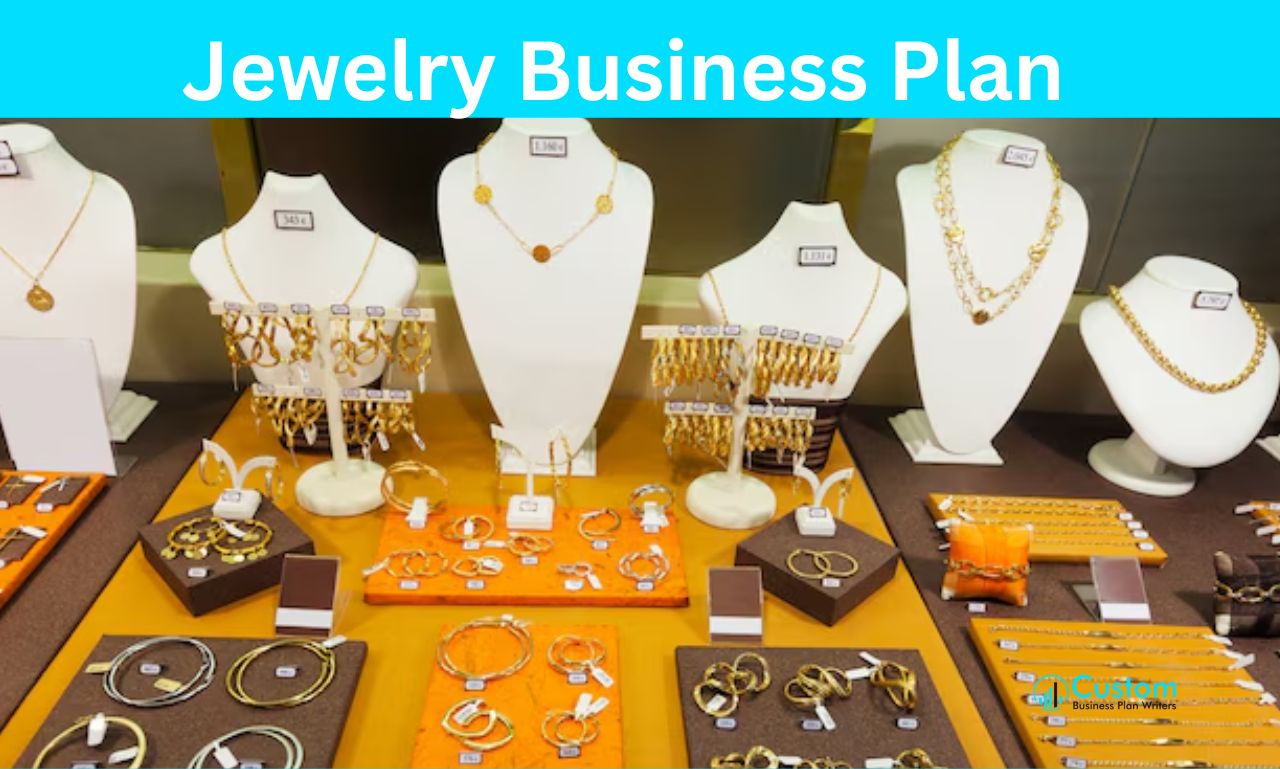Jewelry Business Plan Template
January 01, 2025 · 7 min read

A jewelry business plan template serves as a structured guide to help business owners organize their ideas and strategies. It outlines essential sections that must be included to ensure the business runs smoothly and achieves its goals. Whether you are starting a small jewelry shop or an online jewelry store, a well-designed template can simplify the planning process. It provides placeholders for sections such as your company description, market analysis, and financial plan. By following a template, you ensure no critical element is left out, making it easier to focus on the bigger picture of your jewelry venture.
What is a Jewelry Business Plan?
A jewelry business plan is a written document that describes your business goals, the methods you will use to achieve them, and the resources required. It serves as a roadmap for starting and managing a jewelry business. This document details your business idea, the types of jewelry you will sell, and the target audience. It also includes information about your competitors, pricing strategies, and marketing plans. Investors often use a business plan to determine if your business is worth supporting. A clear and professional business plan can help secure funding, guide daily operations, and set long-term goals for success.
Importance of a Jewelry Business Plan
A jewelry business plan is important because it provides a clear direction for your business. It helps you identify your goals and the steps needed to reach them. A business plan is also crucial for understanding the jewelry market and how your business fits into it. By identifying competitors and analyzing market trends, you can find opportunities to stand out. Having a complete business plan makes it easier to secure funding from banks or investors. It shows them that you have a well-organized strategy and are serious about your business. It acts as a guide, helping you stay focused and adapt to challenges along the way.
Steps of Writing a Jewelry Business Plan
To write a complete business plan for a jewelry shop, it is important to follow specific steps. The steps of writing a business plan for a jewelry shop are clear and each step should be done with excellence in mind.
- Start with Research: Learn about the jewelry industry, including current trends, customer preferences, and competitors.
- Write the Executive Summary: Summarize your business, including your mission and key goals.
- Describe Your Company: Provide details about your business name, location, and the types of jewelry you sell.
- Conduct Market Analysis: Research your target audience and understand their buying behaviors.
- Analyze Competitors: Identify businesses that offer similar products and learn about their strengths and weaknesses.
- Create a Marketing Plan: Outline how you will attract and retain customers.
- Develop an Operations Plan: Explain how your business will run daily, including production and supply management.
- Outline the Financial Plan: Include your budget, revenue projections, and funding requirements.
- Add an Appendix: Include any extra documents, such as licenses, permits, or supplier agreements.
Executive Summary
The executive summary is the first section of your business plan but is often written last. It provides a brief overview of your business, highlighting your mission, products, and target market. This section should grab the reader’s attention and give them a reason to read the rest of the plan. For a jewelry business, mention what makes your products unique and how you plan to meet customer needs. Also, include a summary of your financial goals and funding requirements. The executive summary should be concise yet compelling, offering a snapshot of your vision and strategy.
Company Description
The company description section introduces your jewelry business. It should include your business name, location, and the type of jewelry you sell, such as handmade pieces, luxury designs, or custom orders. You should also explain your business mission and values. Highlight what sets your business apart, such as unique designs, high-quality materials, or exceptional customer service. Mention your business structure, whether it is a sole proprietorship, partnership, or corporation. This section gives readers a clear understanding of your business identity and goals.
Industry and Market Analysis
Industry and market analysis is where you demonstrate your understanding of the jewelry market. Start by explaining the current trends in the industry, such as growing demand for sustainable jewelry or the rise of online shopping. Then, describe your target market—who they are, what they like, and how they shop. This section should also include an analysis of market size and growth potential. By understanding the industry and market, you can identify opportunities and make informed decisions about your business strategy.
Customer Analysis
Customer analysis focuses on understanding your ideal customers. Begin by identifying your target audience, such as young professionals, couples shopping for engagement rings, or collectors of unique pieces. Describe their demographics, like age, gender, income level, and lifestyle. Dive deeper into their buying habits and preferences. For example, are they looking for affordable fashion jewelry or luxury items? Understanding your customers helps you tailor your products and marketing efforts to meet their needs and increase sales.
Competition Analysis
Competition analysis helps you understand other businesses in the jewelry market. Start by identifying your direct competitors, such as local jewelry stores or online retailers. Study their product offerings, pricing, and marketing strategies. Then, identify their strengths and weaknesses. For example, a competitor might offer affordable jewelry but lack unique designs. Use this information to find ways to differentiate your business. Highlight what makes your products better or more appealing to your target audience.
Marketing Plan
A marketing plan outlines how you will promote your jewelry business and attract customers. Start by defining your brand identity, including your logo, colors, and messaging. Then, describe the marketing channels you will use, such as social media, email campaigns, or influencer partnerships. Discuss your pricing strategy and any promotions or discounts you plan to offer. Also, include plans for customer retention, like loyalty programs or personalized services. A strong marketing plan helps you build brand awareness and drive sales.
Operations Plan
The operations plan explains how your jewelry business will run daily. Include details about production, such as sourcing materials and creating products. If you have a physical store, mention the location and how you will manage inventory. For online businesses, discuss your e-commerce platform and shipping process. Also, outline your staffing needs, including roles and responsibilities. This section shows that you have a clear plan for managing your business efficiently.
Management and Organization Strategy
This section focuses on the people behind your business. Start by introducing the management team and their roles. Mention their experience and how it contributes to the success of the business. If you are the sole owner, describe your background and qualifications. Include an organizational chart if applicable. This section demonstrates that your business has strong leadership and a clear structure.
Financial Plan and Projections
The financial plan is one of the most important parts of a business plan. It includes your startup costs, revenue projections, and funding requirements. Start by listing your initial expenses, such as inventory, equipment, and marketing. Then, provide a forecast of your expected revenue and profits for the first few years. Include details about how you plan to secure funding, such as loans or investor support. A well-prepared financial plan shows that your business is financially viable and worth investing in.
Appendix
The appendix contains additional documents that support your business plan. This can include licenses, permits, supplier agreements, or photos of your jewelry. It is also a good place to add any market research data, resumes of team members, or letters of support. The appendix is optional, but it can provide valuable information to readers who want more details about your business.
Who Writes Jewelry Business Plans?
Jewelry business plans can be written by business owners, consultants, or professional writers. Business owners often write their plans because they have the deepest understanding of their vision and goals. However, some choose to hire consultants or writers to ensure the plan is well-organized and professional. These experts can bring valuable insights and help with financial projections or market analysis. No matter who writes the plan, it should reflect the owner’s vision and serve as a practical guide for the business.


